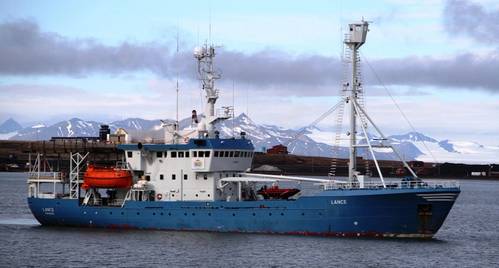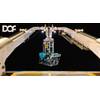Fiber optic gyroscope (FOG) technology occupies a unique place in the navigation history, according to navigation, positioning and imaging solutions provider iXBlue, who says FOG continues to break performance boundaries where other gyroscope technologies have reached their limits.
FOG and inertial navigation systems (INS) technologies perform even in extreme applications such as mission critical space operation, nuclear submarine stealth operation and high latitude (North) navigation. Navigation in the northern latitudes is especially difficult mainly because of the alignment. The physical effect that is measured for the alignment is the projection of the earth’s rotation rate on the horizontal plan. The higher the latitudes, the more difficult it gets to accurately project where North is. iXBlue systems, however, are suited for use in many arctic missions, under the Canadian’s ice and in the Norwegian seas, the manufacturer says.
Recently, the Norwegian Polar Institute conducting a routine mission to recover scientific instruments, offered iXBlue live arctic testing of its products. “When we plan a sailing route, especially when we are close to land, it is very important for us to know the exact heading,” said Lance’s captain.
At North latitude, more than the stability, the problem is to determine the correct heading without bias. Thanks to its high precision, iXBlue Phins consistently delivered performance similar to the ones at lower latitudes. Furthermore, iXBlue gyroscopes, compensated for thermal behavior, maintained performance even mounted on the exterior of the vessel.
iXBlue FOG has also been put to harsh real-world subsea test where GPS aiding is not available. The high latitude test was conducted onboard the International Submarine Engineering Arctic Explorer class AUV. This equipment was selected to support the “Cornerstone” project performed in conjunction with NRCAN/DRDC. The goal was to develop the equipment and methodology necessary to collect high-resolution, hydrographic-quality, bathymetric data of the Arctic seabed in harsh weather conditions. UNCLOS Article 76 survey missions were conducted with an AUV under the ice and a full acoustic positioning solution including iXBlue PHINS to track it.
“During testing, iXBlue PHINS operated as predicted over two arctic deployments and the navigation performance was up to our expectations. iXBlue offers the most reliable solution for high north navigation today and we are also very pleased with their service,” said James A.R. McFarlane at ISE.

















 February 2024
February 2024



